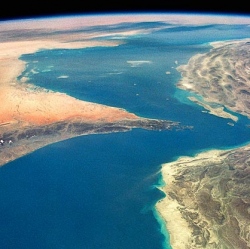
Humans have been changing the atmosphere from Earth’s surface for nearly two centuries-but now in the Space Age, we’re altering it from outer space, too.
Atmospheric scientists recently found traces of unexpected metals in the stratosphere, the second-lowest layer of the atmosphere where ozone resides and meteors burn up into shooting stars.
The researchers determined that this pollution came from spacecraft as they reenter Earth’s atmosphere, in research published last week in the journal Proceedings of the National Academy of Sciences.
Usually, mission planners’ main concern is to ensure that space debris doesn’t hit the ground, where it could hurt people or structures-but, as this research points out, what evaporates in the stratosphere could still be making an impact, even if it’s not a literal one.
The research team flew through the stratosphere across the continental US in aircraft specially designed to fly at high altitudes, equipped with air-analyzing instruments in their nose cones. Flying as high as 70,000 feet, the research craft can go above 99 percent of the mass of Earth’s atmosphere.
Within the stratosphere, the collecting equipment on these planes recorded traces of the heavy metals niobium and hafnium. These elements aren’t found naturally in the atmosphere, but they are typically used in rockets and spacecraft shells.
The stratosphere contains tiny blobs of sulfuric acid, which are now infused with the metals from old spacecraft. The presence of those metals could change the chemistry of the stratosphere, including how big the sulfuric acid drops grow. Eventually, there may need to be additional environmental precautions for spaceflight to prevent harm to the stratosphere.
“The only way for these particles not to appear in the upper atmosphere is for the satellites not to be launched in the first place,” explains University of Exeter atmospheric scientist Jamie Shutler, who was not part of the research team.
Before we can solve this problem, “The concept that reentry can affect the stratosphere has to be thought about,” says lead author Daniel Murphy, atmospheric scientist at NOAA. He emphasized that this idea is still incredibly new and will require much more research to understand the scale and potential consequences of this pollution.
The team expects that the proportion of particles containing metal could grow from 10 to more than 50 percent in the next few decades, especially thanks to upcoming plans to reduce space debris by hurling it back into the atmosphere.
